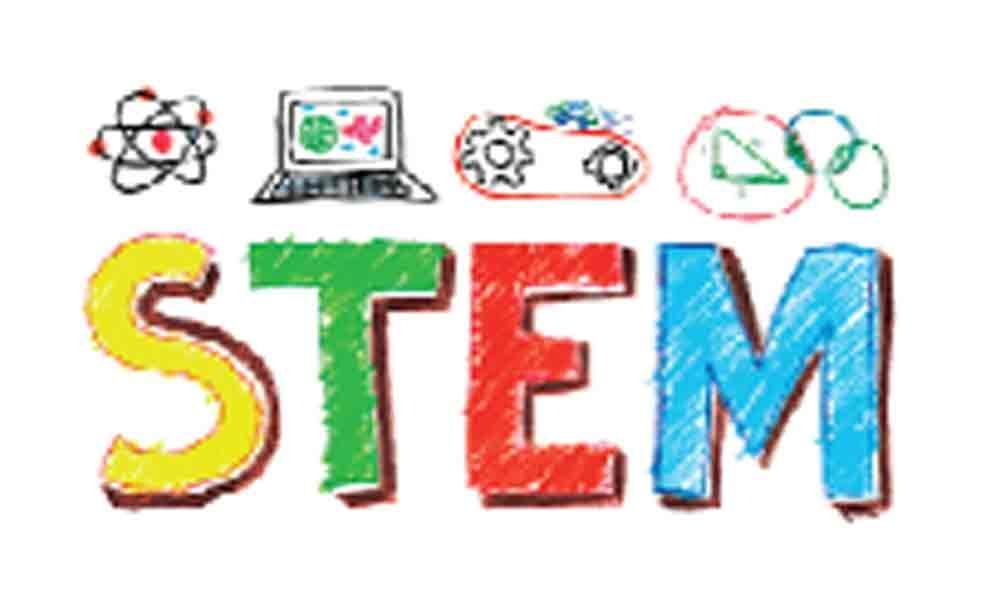Live
- Jadumani Singh, Akash Gorkha enter quarters of ASBC Asian U-22 & Youth Boxing
- Squash: Senthilkumar storms into Batch Open final
- Lilian Kasait, Peter Mwaniki reign supreme in World 10K Bengaluru 2024; Kiran Matre best among Indians at fifth
- Stalin felicitates Gukesh, hands over cheque for Rs 75 lakh
- IPL 2024: Sai Sudharsan, Shahrukh fifties lift Gujarat to 200 vs RCB
- Why young men must be aware of testicular cancer
- Decision to build Ram Mandir in Ayodhya should have been taken on next day of Independence, PM Modi says in K'taka
- 6 missing in road accident in J&K's Sonamarg, three rescued
- TN: To prevent recurrence of mishaps and death, stringent regulations for fireworks industry
- 'I feel pity for him': Bhavnagar's prince lampoons Cong's Yuvraj over 'kings as land grabbers' row
Just In
STEM education the way to success


The ambitious 'Make in India' programme aims to make India a prominent global manufacturing hub. But one problem that persists in higher education...
The ambitious 'Make in India' programme aims to make India a prominent global manufacturing hub. But one problem that persists in higher education system it hasn't kept up with the industry's demands. Today India needs education systems that help prepare the next generation of talent in India.
'STEM Education' stands for Science, Technology, Engineering and Mathematics, is relatively a new term in the Indian education sector. Currently, there is growing demand for STEM education in India and putting a lot of demand on the academic institutions to churn out highly skilled graduates.
According to the National Science Foundation, 80 per cent of the jobs created in the next decade will require more of math and science skills. As robust STEM education creates critical thinkers, problem-solvers, and next generation innovators. With popping up of many education companies in India, it is producing the highest number of scientists and engineers. Over the few years, the growth of STEM has picked up significantly in India. It has reached a stage, where the number of STEM jobs is outpacing the number of STEM graduates.
Despite having the best quality talent in India, it lags behind in a practical-oriented tech education. Most of the system is focused on exams and scoring grades and practical knowledge is very limited. The tests do not help with applying the knowledge learnt and so these students face a problem once they graduate and go out in the industry to deal with real-world problems.
Moreover, the exam-focused education model had limitations related to innovation, problem-solving and creativity. Also, the skills that they acquire during their education are very limited when compared to the technological progress that has happened in the last 5 years in India.
Case in point, the curriculum is not updated. Most CS departments in universities still teach Java, Turbo C++, and pre-standardized C++. So, for students starting a 4-year engineering degree, half of what they learn in their first year gets outdated by their third year of college. STEM education helps the children to learn more practical outcomes, than theoretical ones.
Cognitive abilities:
The STEM education provides a framework of embodied learning by means of practical, application-based teaching, which aids in effectively developing the decision making and strategising skills of children.
It improves spatial cognition and reasoning skills, helping find application in several fields like mathematics, physics, chemistry, engineering, and the geosciences
The use of embedded instructions makes it easier to engage learners and command their attention to de-contextualised information placed in a meaningful situation.
This helps speeds up learning, deepens engagement, improves focus attention, and generates genuine excitement.
Research shows that the link between engineering-technology-entrepreneurship is evidently missing in India. However, in last few years STEM schools have been incorporating innovative techniques to ensure that children are more inclined as well as interested in doing self methods. In India, there is a lot of innovation is taking place in STEM education sector.
In contrast traditional class rooms, it is looking beyond smart classrooms towards hands-on learning and STEM enhancement on their current information and communications technology and smart class platforms. At present many STEM companies are working with schools to help them set up STEM centres, tinkering labs with upcoming technologies like Virtual Reality and Augmented Reality.
The government is also helping educational institutions to upgrade their library infrastructures with more engaging learning assets and management tools, and implementing Learning Management Systems, assessment systems, language labs, library management system, ramification, etc.
New 'entry level' coding devices are coming to market that provide schools with the ability to teach simple coding and bring STEM to life in the classroom.
Career outcomes
STEM helps incorporate industry defined skills, talents, and specializations, so children can pursue the careers that are most in demand currently.
It helps working professionals define their own roles and career outcomes and meet the demand graph in international domains
Challenges
Implementation of STEM education with proper design infrastructure, curriculum.
Schools requires more funding for construction of Maker spaces, DIY (Do it Yourself Tools), and best computers.
Create awareness about positive results for pursuing STEM learning methodology.
Education societies lack support from government for improvement of STEM education.
This will be the right time for India to rise to the challenge and develop a culture of application-based learning and innovation among the schools, students, colleges, and teachers.

© 2024 Hyderabad Media House Limited/The Hans India. All rights reserved. Powered by hocalwire.com






